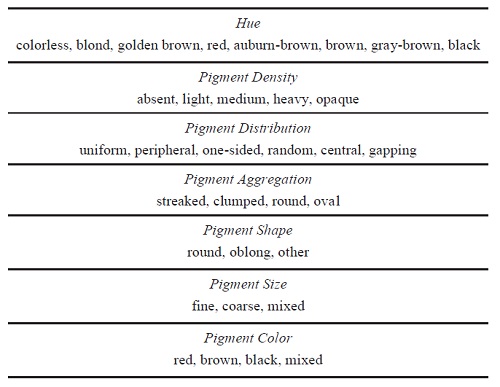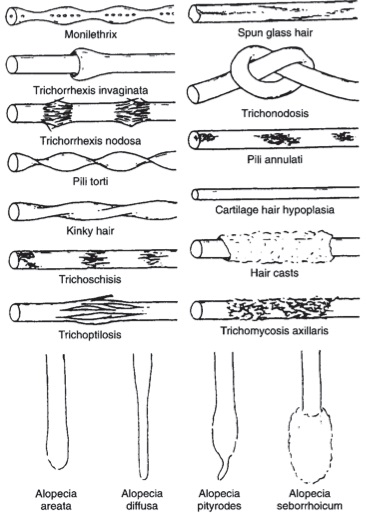It is generally accepted that color and microscopically observable contributing pigment components are the features most relied upon by forensic hair experts, with color being the most critical comparative characteristic available to the examiner. The color of hair depends on pigmentation, surface transparency, and reflectivity. Therefore, all of the components listed in Table 1 need to be observed and recorded when examining hair, however, different examiners may use different terminology to define color (Table 2).

Table 1: Color of Hair

Table 2: Classification of Hair Color
In addition to color and pigmentation, hair shape and form should always be recorded. Hair shape can indicate body and racial origin, but has a limited discriminating power for single hair samples . Table 3 represents different terminology used by hair examiner experts to describe hair shape and form.

Table 3: Classification of General Form
In addition to hair form, shaft diameter, pigment granule density and distribution, and cross-sectional shape can be used to indicate racial origin. The typical results for the observation of these characteristics for Caucasian, Negroid, and Mongoloid racial groups are outlined in Table 4. Cross-sectional shape is one of the more relied upon methods of racial classification, where Caucasian cross-sections are typically oval in shape, Negroid cross-sections are typically flat, and Mongoloid cross-sections are typically round [5].

Table 4: Racial origin
Disease can cause morphological changes in hair, which can also assist in human hair examination and comparison. These abnormalities are not common, but should always be noted when encountered . Figure 11 outlines the morphological appearance of hairs affected by the most common types of diseases encountered in hair samples.

Figure 11: Schematic diagram of morphological appearance of human head hair afflicted by certain disease conditions

